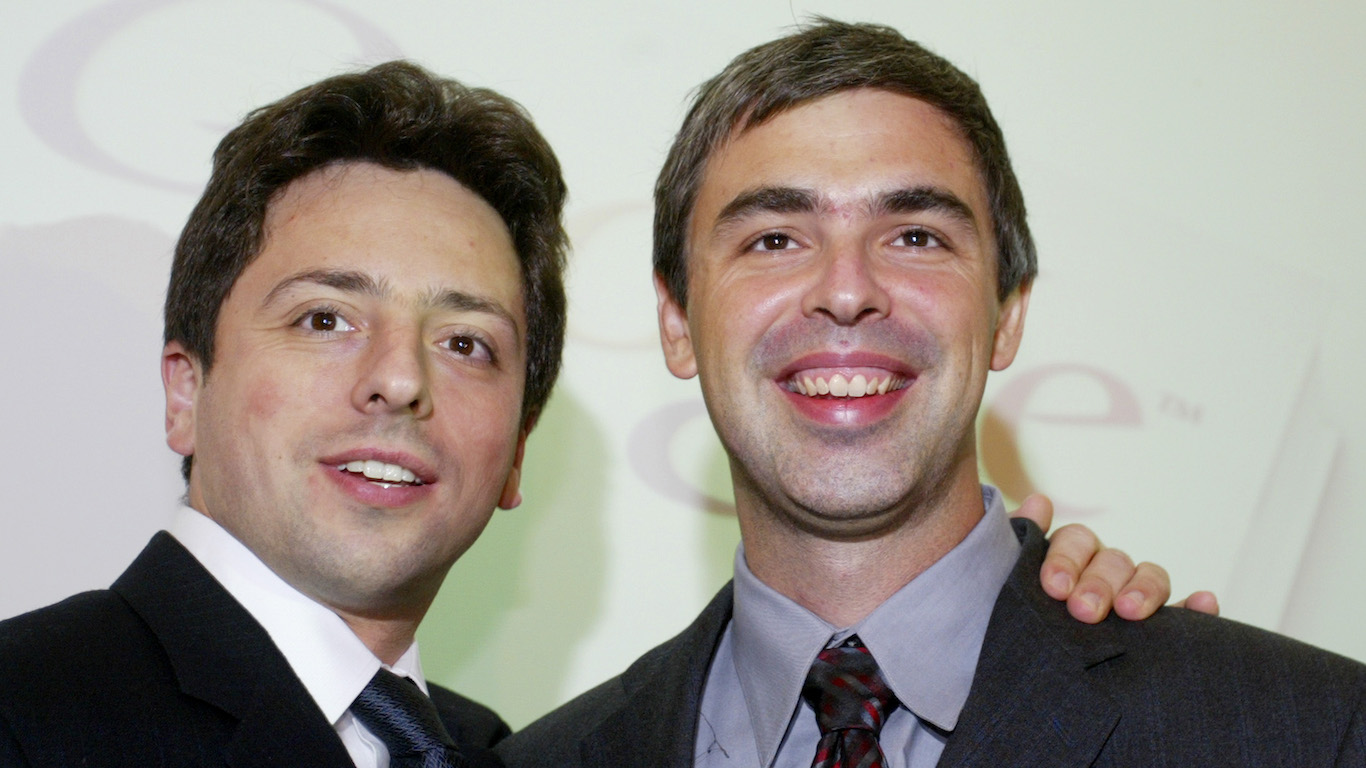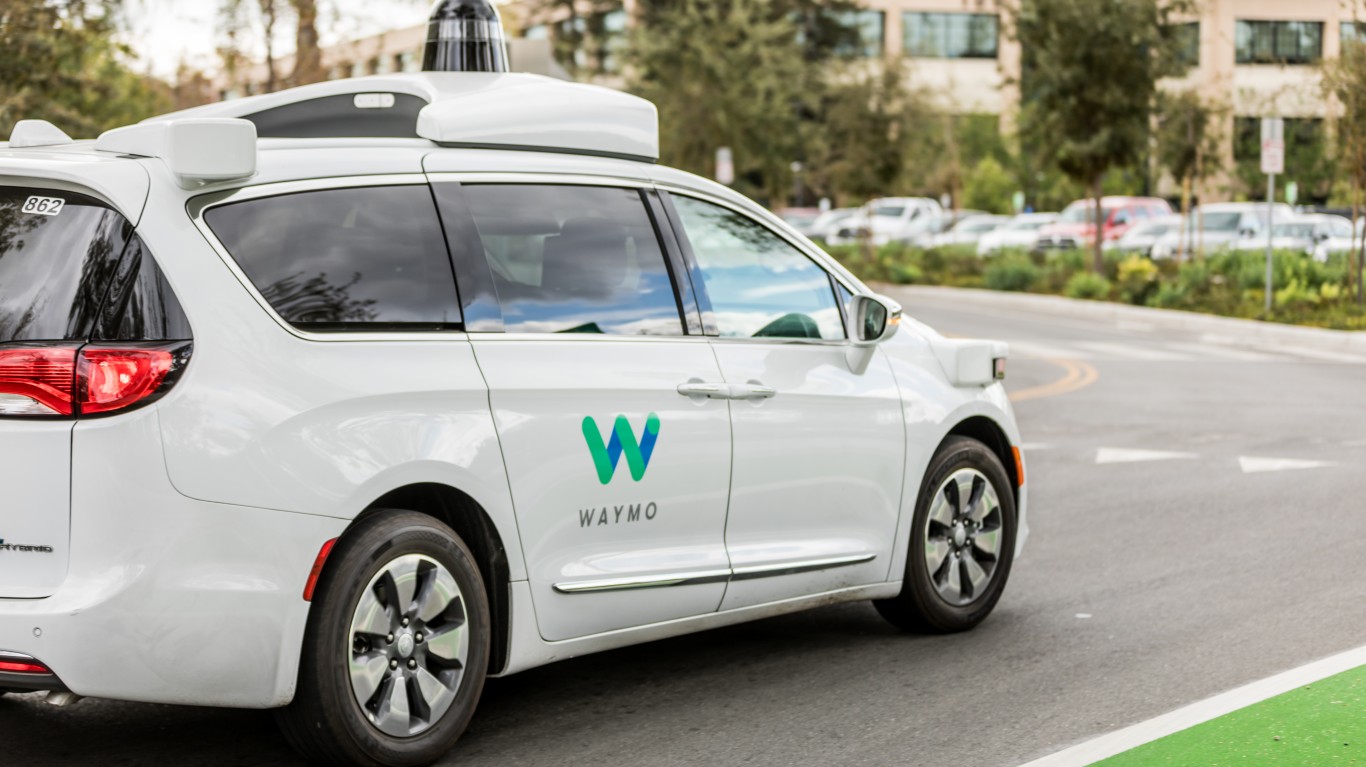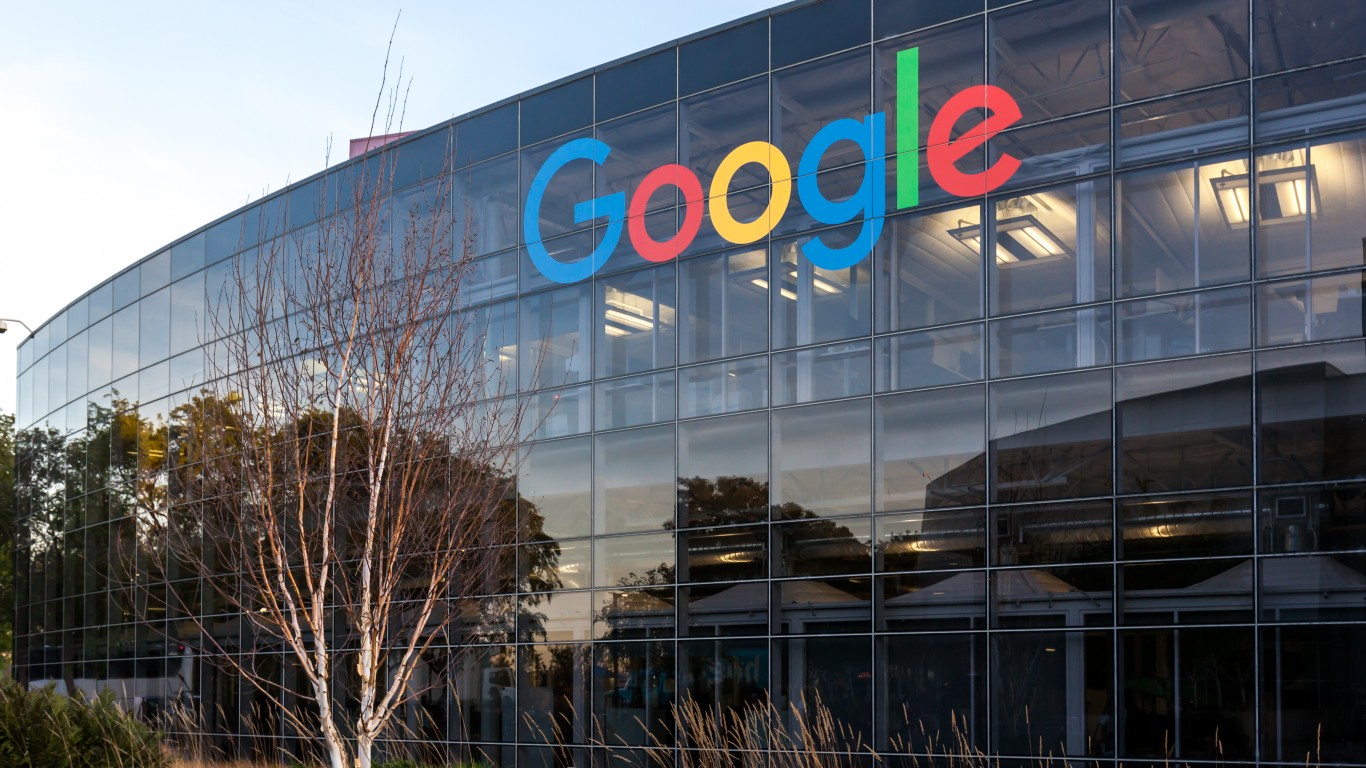
Unlike new companies today that pull in millions in early venture funding, Google’s first infusion of cash in 1996 totaled $100,000 from a single angel investor. The company incorporated in 1998 and raised its first–and only–venture-funded round of $25 million in 1999.
At its 2004 IPO, Google Inc. raised $1.67 billion by selling 19.6 million shares at $85 each, yielding a market cap of more than $23 billion. Then-CEO Eric Schmidt wrote the story of the IPO for the Harvard Business Review in 2010.
In early 2014, Google announced a nearly two-for-one stock split (1,998-for-1,000) and the creation of new class C shares that did not have voting rights. The company’s market cap had grown to more than $800 billion by then. The next year, Google changed its name to Alphabet Inc. (NASDAQ: GOOGL) and became the parent company of Google, YouTube, and other subsidiaries. Alphabet’s market cap peaked at just under $2 trillion in late 2021.
Alphabet completed a 20-for-1 stock split in July 2022 when the share price had reached $2,200. That re-priced the stock at around $110. At a recent closing price of $137, the class A voting stock has added about 24.5% since the July stock split.
Through their ownership of roughly 86% of Alphabet’s class B shares with 10x the voting power of class A shares, founders Larry Page and Sergei Brin control more than 51% of the company’s voting rights.
Google’s last 10 years
Alphabet will celebrate its 20th birthday as a publicly traded company next year. With the exception of the first quarter of 2020 (the beginning of the COVID-19 pandemic), the share price climbed steadily until November of 2021, when a decline began that lasted for 11 months and shaved more than 44% from the share price.
The drop followed the public release of OpenAI’s ChatGPT. After rushing out its competitor, Bard, Alphabet’s stock price has risen by about 40%. Here’s how the company has performed in the past five fiscal years.
2018

- Revenue: $136.82 billion
- Net income: $30.74 billion
- Gross margin: 56.5%
- Net margin: 22.5%
- P/S multiple (last 12 months): 5.8x
2019
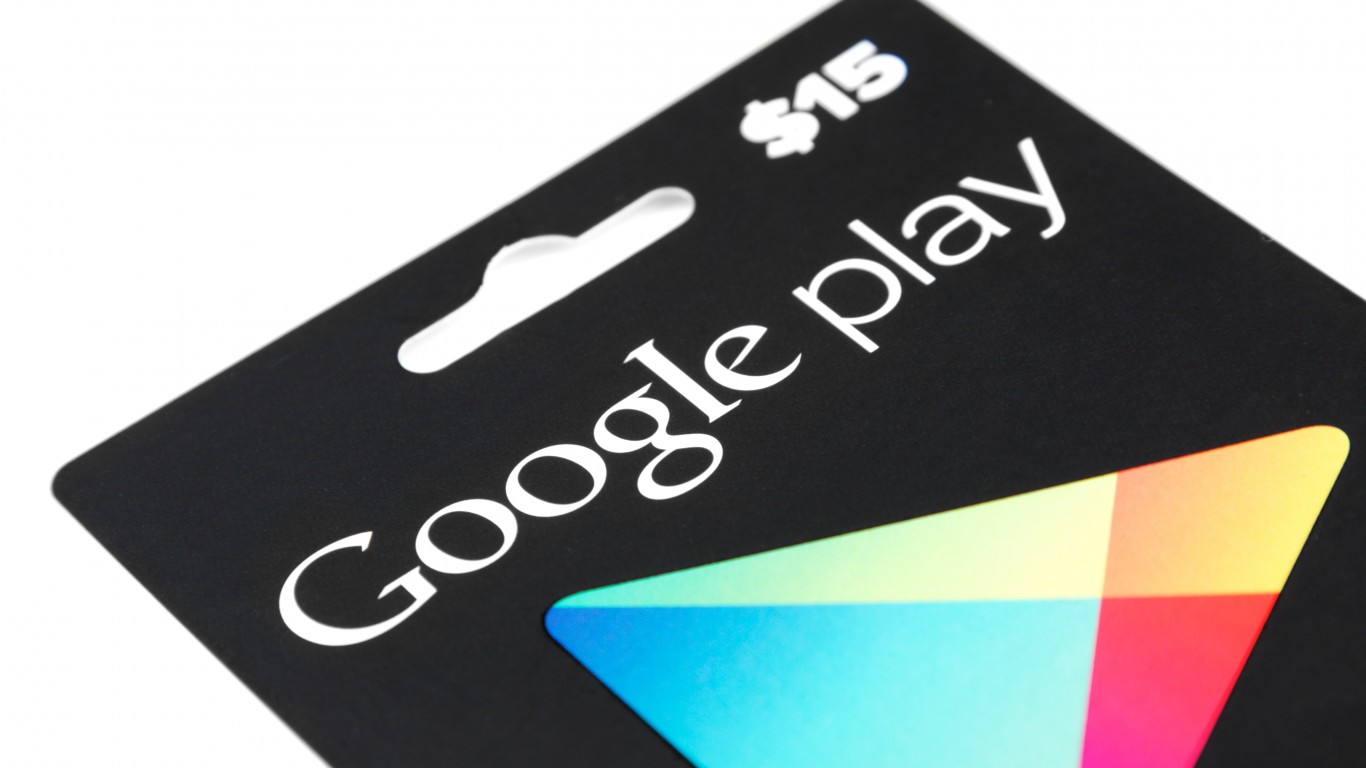
- Revenue: $161.86 billion
- Net income: $34.34 billion
- Gross margin: 55.6%
- Net margin: 21.2%
- P/S multiple: 6.3x
2020

- Revenue: $182.53 billion
- Net income: $40.27 billion
- Gross margin: 53.6%
- Net margin: 22.1%
- P/S multiple: 7.1x
2021
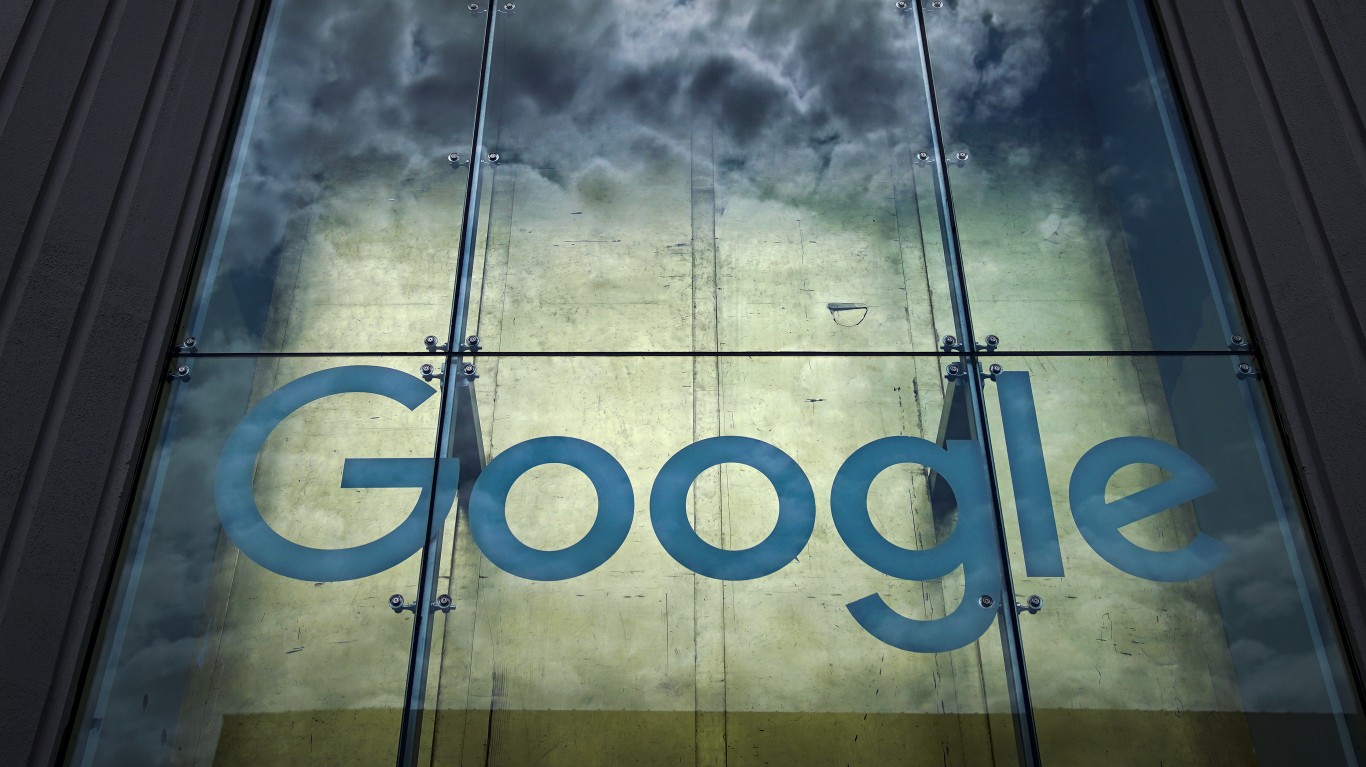
- Revenue: $257.64 billion
- Net income: $76.03 billion
- Gross margin: 56.9%
- Net margin: 29.5%
- P/S multiple: 7.1x
2022
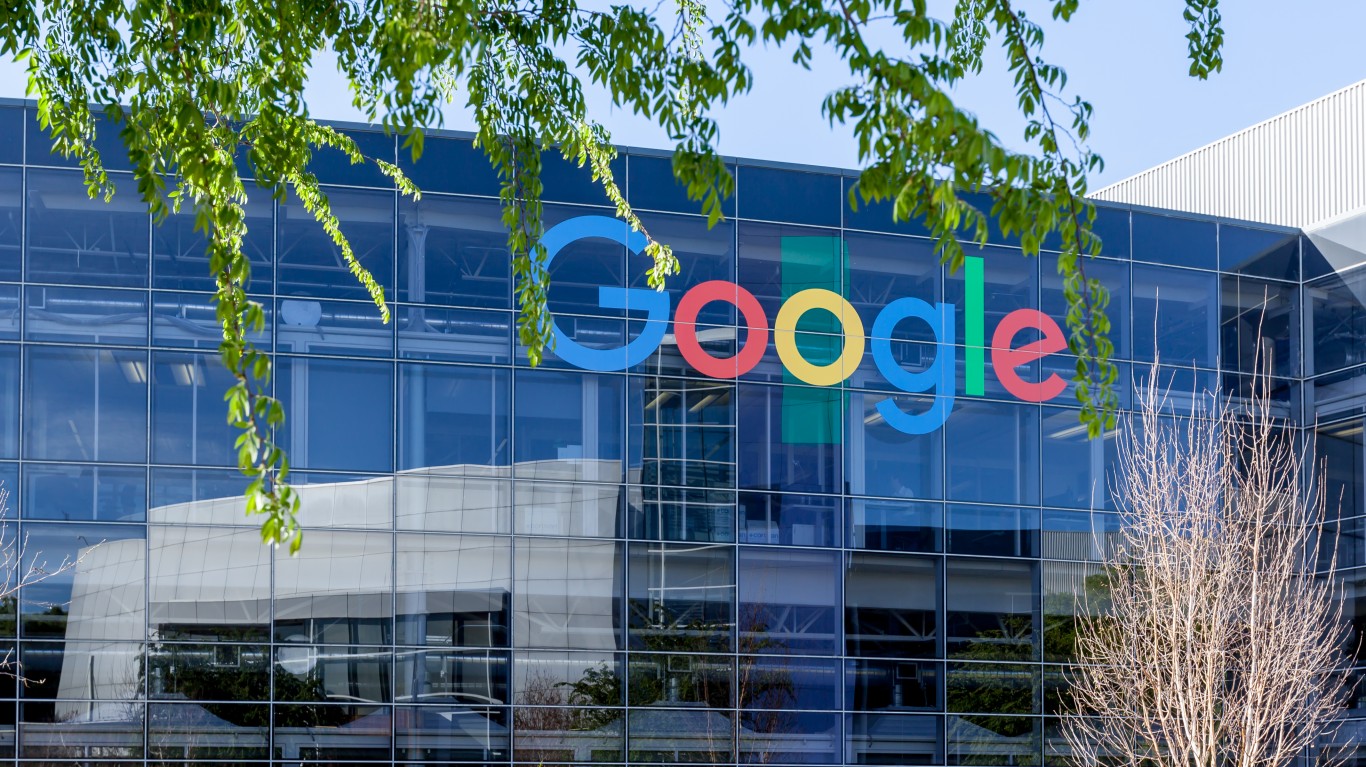
- Revenue: $282.84 billion
- Net income: $59.97 billion
- Gross margin: 55.4%
- Net margin: 21.2%
- P/S multiple: 4.9x
For the 2023 fiscal year ending in December, the consensus revenue estimate is $305.7 billion. Over the past four quarters, the P/S multiple is 5.5x, and the forecast for the next four quarters is 5x.
Projected 2030 stock prices for Alphabet
Our predicted prices for Alphabet stock in 2030 are $387 (base), $650 (bull), and $265 (bear). We’ll break down each of these scenarios in more detail below.
Base case for Alphabet
Alphabet is by far the largest (by market cap) company in the communications services sector and the third largest company trading on a U.S. exchange. Last year’s profit declines were down to investors’ concerns about growth in the advertising market during a period of high and potential rising inflation and more spending on R&D and sales & marketing. Alphabet recovered from the shock of being behind in AI after pushing out some changes to its Google search engine and its Bard chatbot.
The company also faces regulatory issues, including U.S. Justice Department and European Union lawsuits charging Google’s search engine with violating antitrust laws. Large fines will hurt, clearly, but Alphabet gets around 80% of its revenue from advertising on Google and YouTube. Any regulatory actions threatening that revenue stream are not in investors’ best interest.
During its high-growth period between the 2004 IPO (P/S multiple of 16.5x) to 2017’s 7.4x P/S multiple, the share price increased by almost 2,000%. Between 2018 and 2022, the P/S multiple fell from 5.8x to 4.9x, and the share price rose by 42.6%. Year-over-year revenue and gross profit growth reached highs of 41.5% and 50.01%, respectively, in 2021. Revenue grew by 9.8% in 2022, and gross profit rose by 6.8% in 2022.
Over the past five years, Alphabet’s share price growth has increased by an average of about 49%, including a jump of 142.85% in 2018, a jump of 91.43% in 2021, and a decline of 18.76% in 2022. Excluding these three outliers, the average for the other two years was around 16%. Using that as our revenue growth rate, Alphabet stock rises to $387 a share (182%) by 2030. That’s our base case.
Bull case for Alphabet
More than half of global advertising spending on all media goes to digital platforms. From a current level of around $550 billion in digital ad spending, growth estimates through 2030 congregate at around $1 trillion. Google’s total ad revenue last year was $224.5 billion. At its current pace, the fiscal 2023 total could reach roughly $240 billion, more than 43% of the year’s expected global digital ad spending.
When Google turned its first search engine loose in the late 1990s, it was better than any of the existing search engines by orders of magnitude. All competitors disappeared almost overnight. That is unlikely to happen this time around, especially with Microsoft and Amazon taking aim at the digital ad market with AI models of their own.
Expecting Google to hold onto 43% of digital ad spending until 2030 ignores the fact the strongest challengers to its domination are both larger than Alphabet and much stronger competitors than Lycos, Alta Vista, and even Yahoo in 2004. Cutting that percentage by about a third and adding in an increase due to AI integration, Alphabet’s share price could rise to around $650, up almost 375% from its current level. That’s our bull case. Note that it does not include any contribution from Waymo, Alphabet’s self-driving car concept.
Bear case for Alphabet
Being first to market with a revolutionary product that comes with both a moat and room for expansion is the best of all possible worlds for a tech company. Google had both, and it had the engineering talent and cash to widen the moat and expand.
But it’s getting more difficult. As our bull case demonstrates, expecting Google to dominate search advertising–and digital advertising in general–is not likely to be a successful investment strategy. A bear case for the stock does not end with a stock price of zero, however.
What could disappoint Alphabet investors are missteps in the development or implementation of AI models in its search engine or cloud businesses. Regulatory issues, which we don’t think will affect the share price in either the bull or base case, could hammer Google’s ad network. For the first nine months of 2023, revenue is down by about $1.3 billion to $23.02 billion, more than 10% of all revenue for the first three quarters of the year. If U.S. or EU regulators force the sale of all or part of Google’s ad network to eliminate antitrust, that will sting.
Since January 2019, Alphabet’s share price has doubled. A bear case for Alphabet stock assumes that it will take seven years instead of four for the share price to double again to around $265. That’s our bear case.
The Average American Has No Idea How Much Money You Can Make Today (Sponsor)
The last few years made people forget how much banks and CD’s can pay. Meanwhile, interest rates have spiked and many can afford to pay you much more, but most are keeping yields low and hoping you won’t notice.
But there is good news. To win qualified customers, some accounts are paying almost 10x the national average! That’s an incredible way to keep your money safe and earn more at the same time. Our top pick for high yield savings accounts includes other benefits as well. You can earn up to 3.80% with a Checking & Savings Account today Sign up and get up to $300 with direct deposit. No account fees. FDIC Insured.
Click here to see how much more you could be earning on your savings today. It takes just a few minutes to open an account to make your money work for you.
Our top pick for high yield savings accounts includes other benefits as well. You can earn up to 4.00% with a Checking & Savings Account from Sofi. Sign up and get up to $300 with direct deposit. No account fees. FDIC Insured.
Thank you for reading! Have some feedback for us?
Contact the 24/7 Wall St. editorial team.


